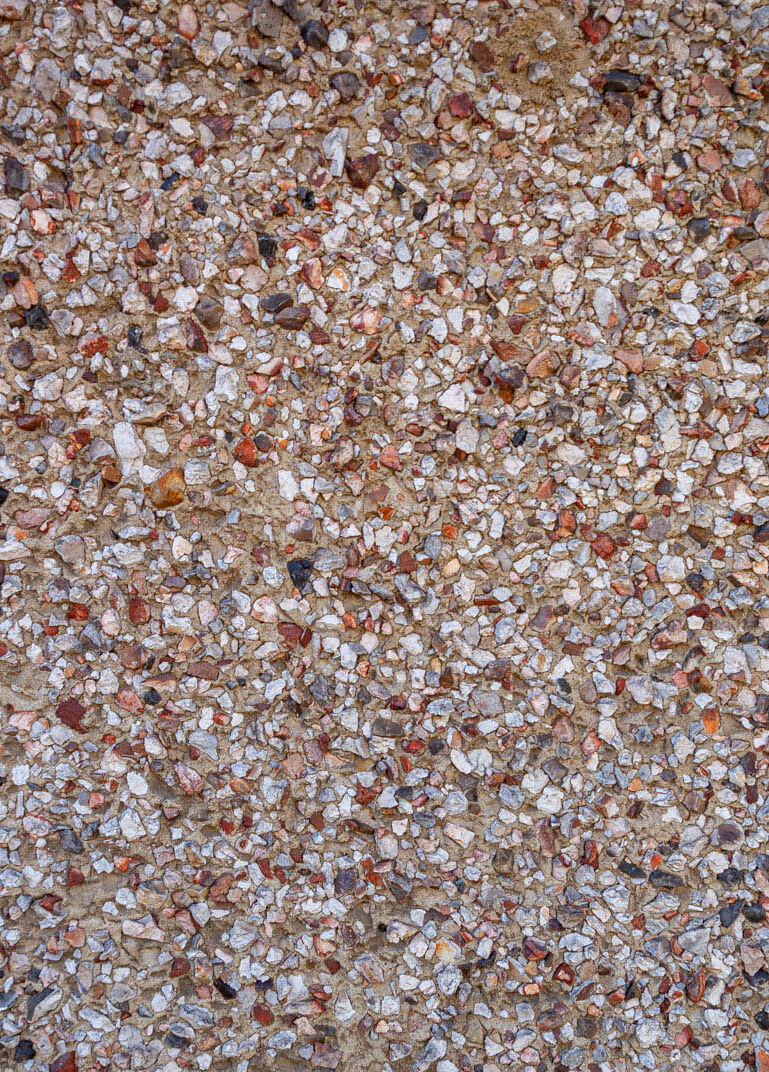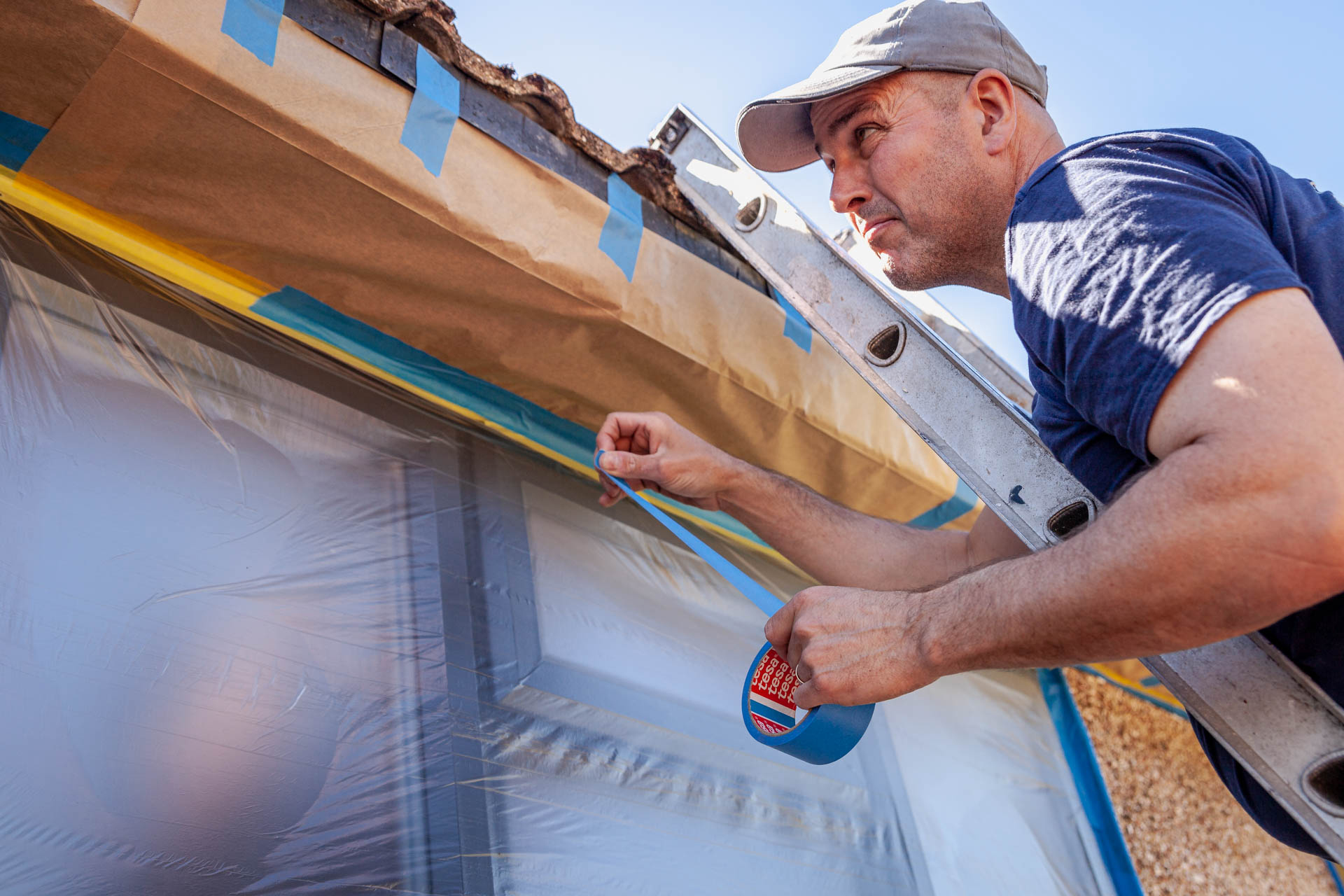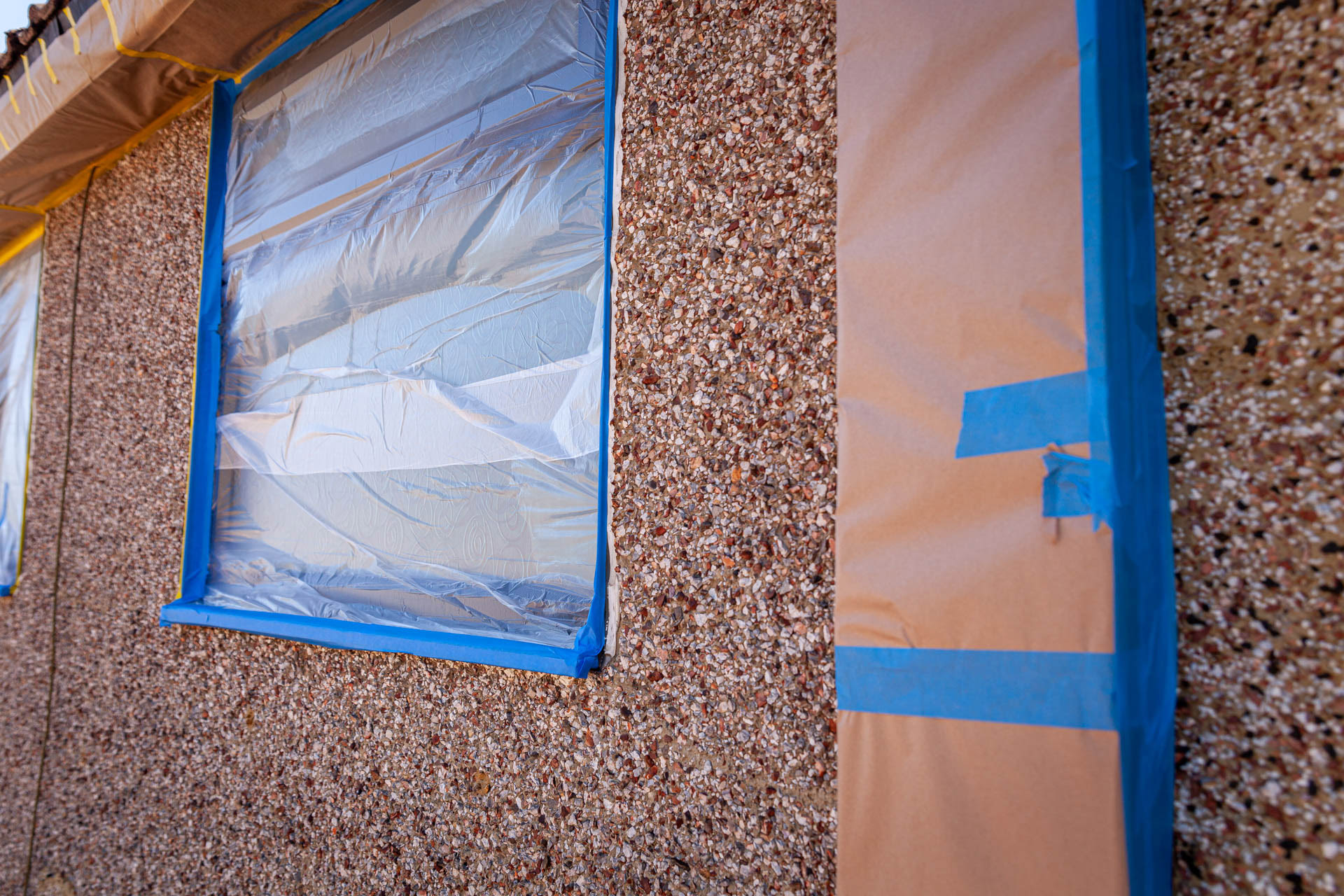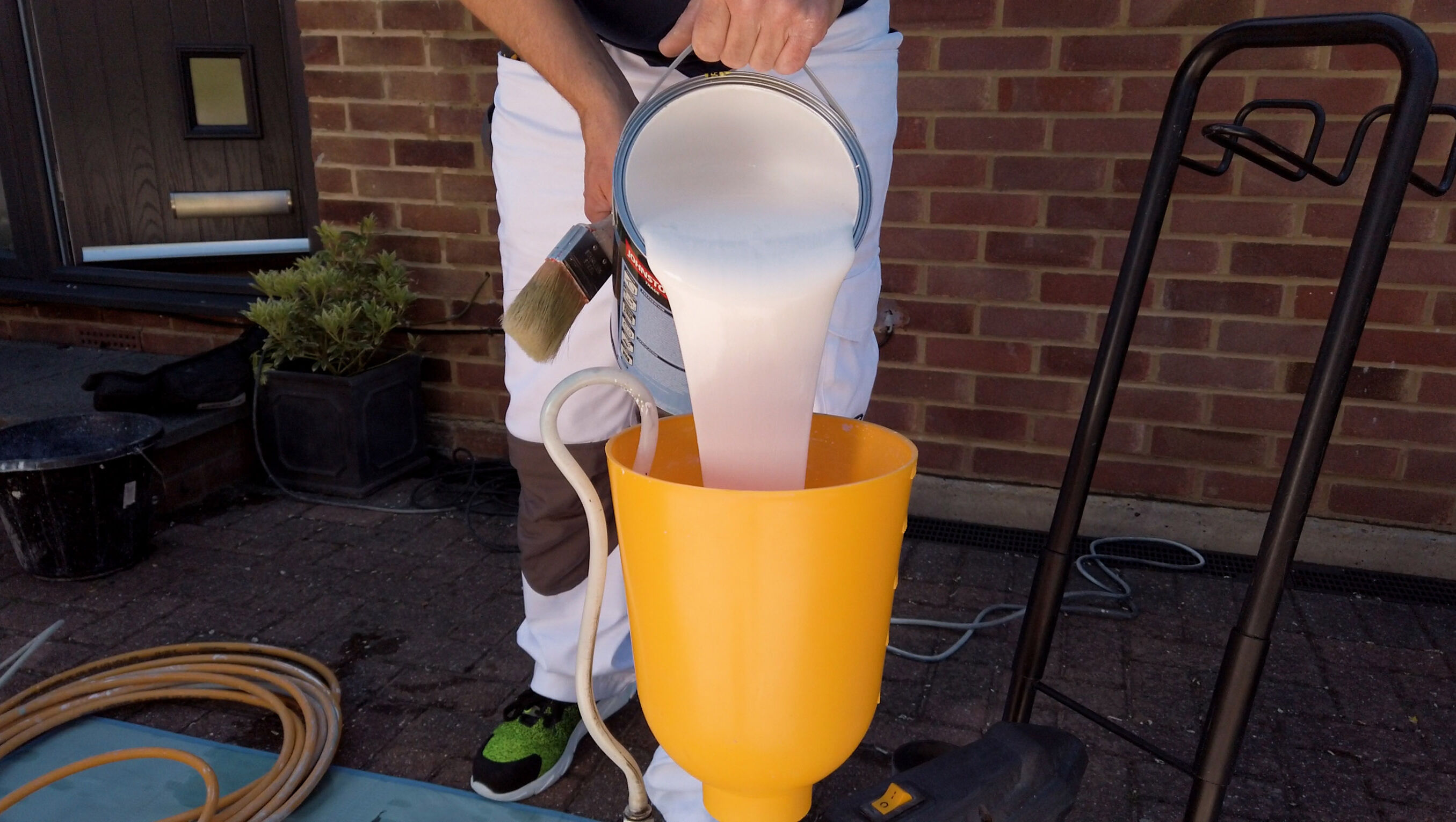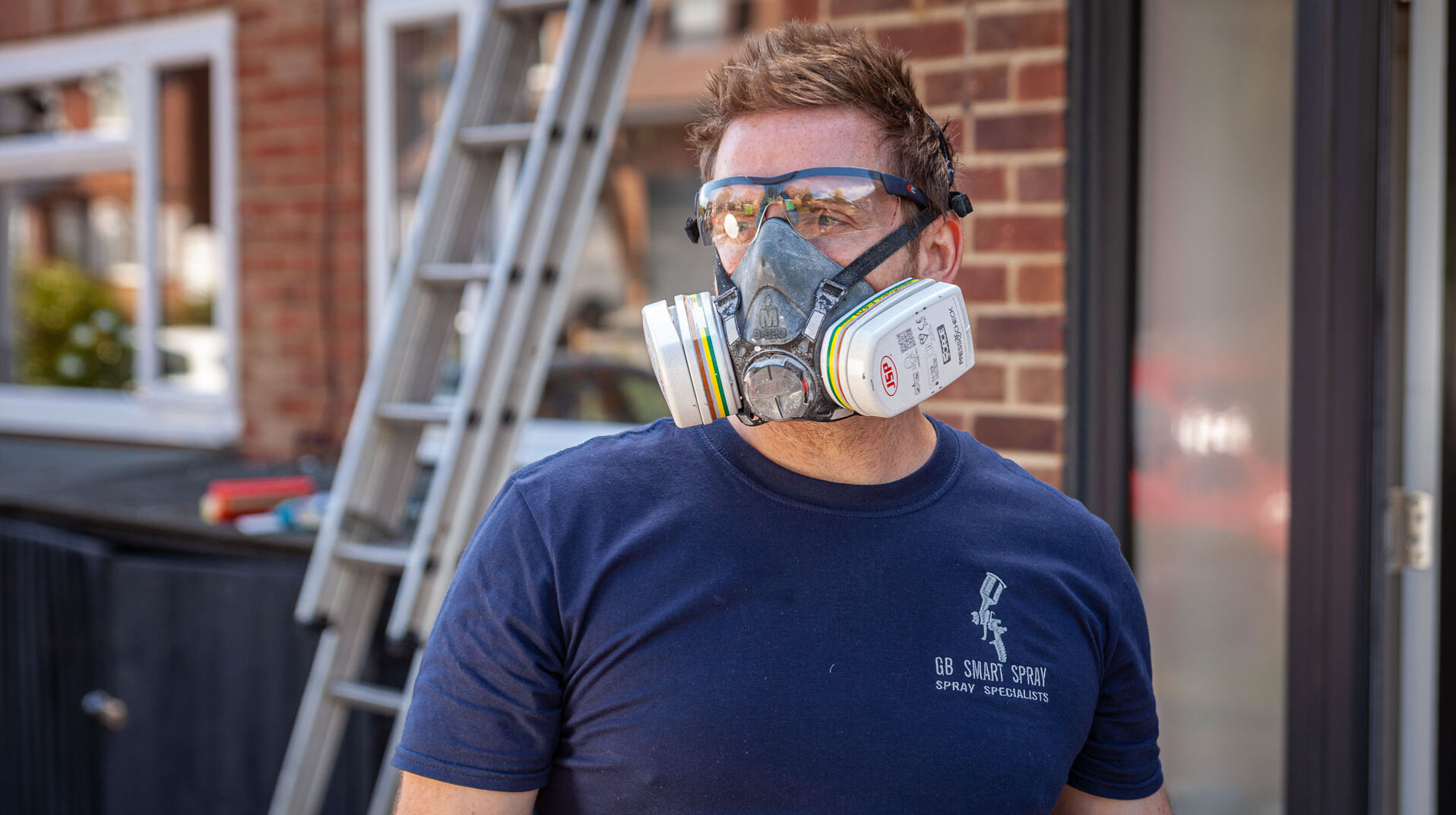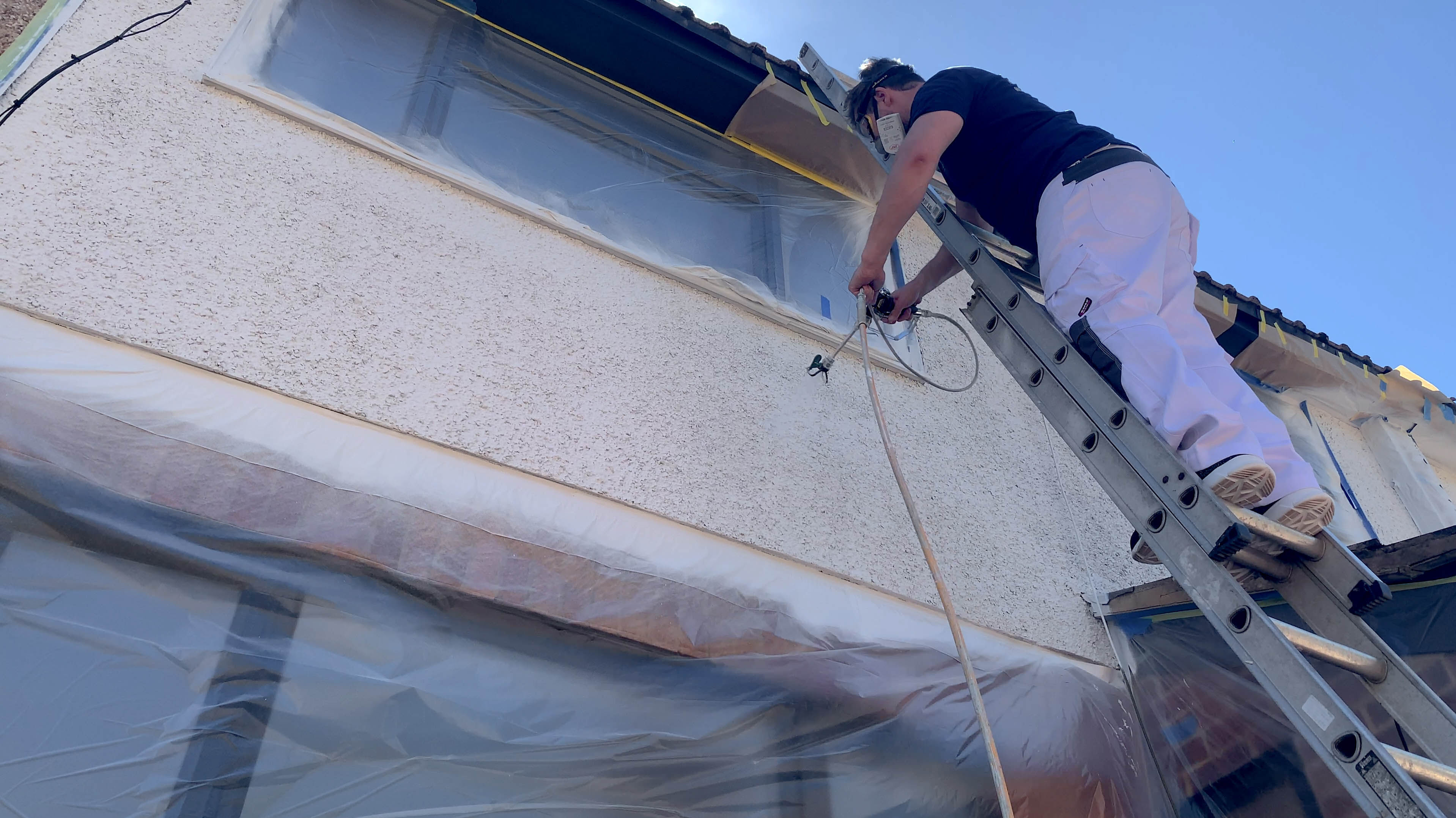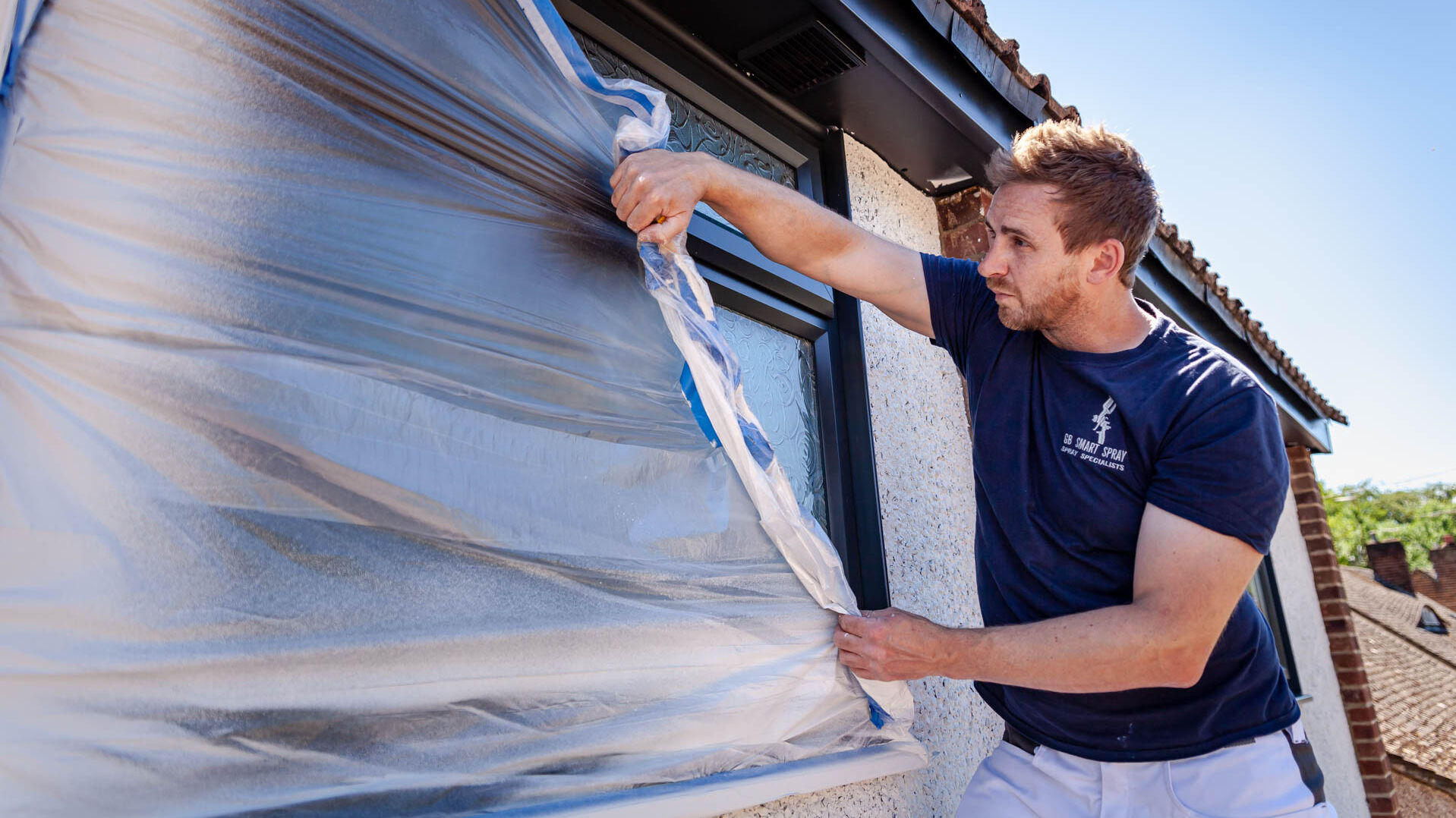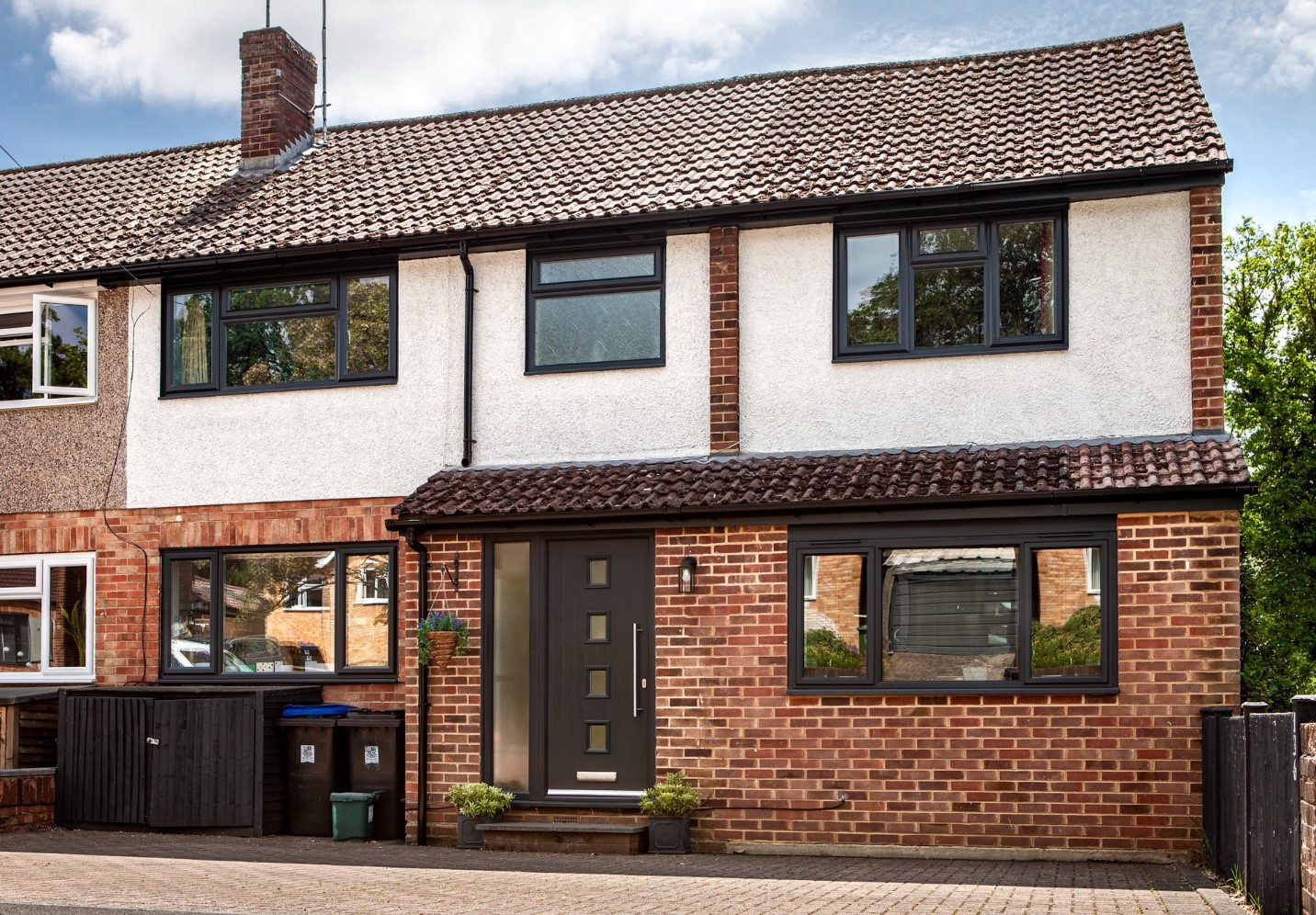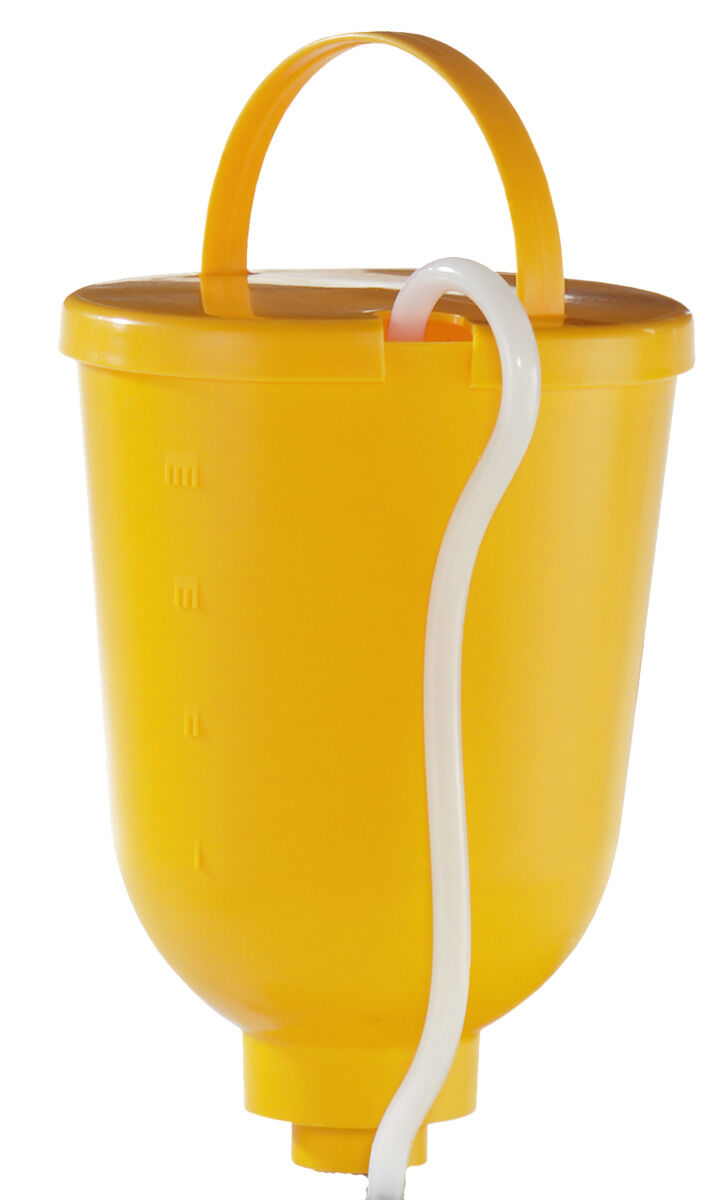Spray Painting a Heavily Textured Pebbledash House Exterior
When it comes to painting the exterior of a house, any professional painter would list pebbledash as one of the worst surfaces to paint. The heavy texture, with small pebbles protruding across the surface, makes painting with rollers very difficult. To paint the surface with paintbrushes means jabbing them between every stone which is time-consuming, laborious and does not cover the surface effectively.
Ben Westwood from GB Smart Spray takes a different approach. Ben explains, “For years we have been spraying pebbledash using exterior masonry paint. Spraying allows us to complete the painting much quicker which reduces the amount of labour time. We can cover the entire surface with paint to protect it and keep it looking good for years.


